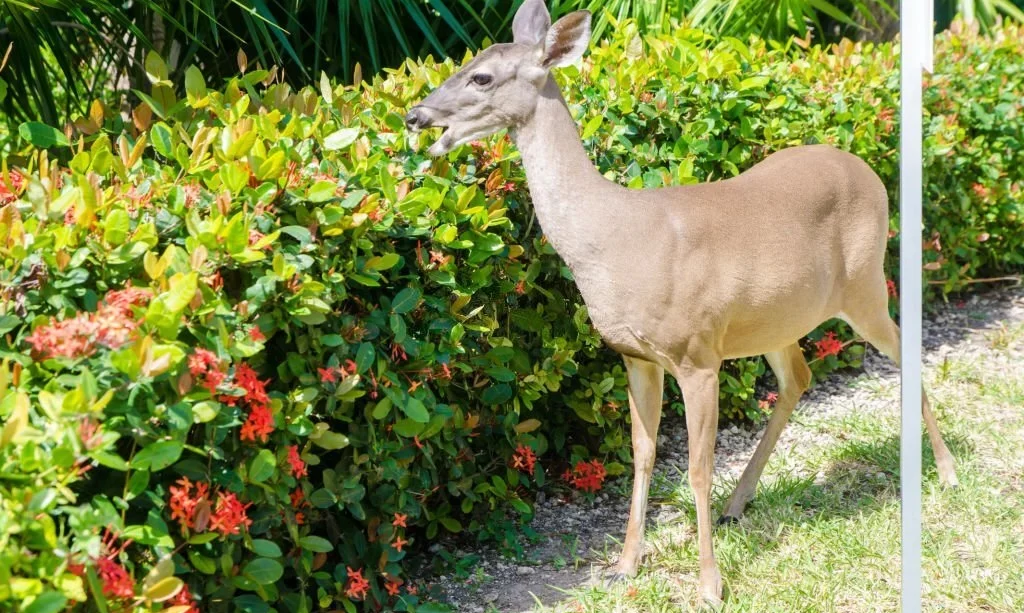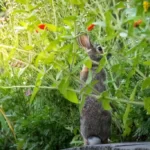In the vibrant tapestry of garden flora, few plants bring as much color and cheer as calibrachoa (Calibrachoa spp.). With their petite, petunia-like blossoms adorning gardens and hanging baskets in an array of vivid hues, calibrachoa has captured the hearts of gardeners and horticulture enthusiasts. Yet, amidst their charming beauty, a question often arises: Are these colorful blooms on the menu for deer, or do deer graciously bypass this vibrant floral display? Our journey begins here, as we embark on an exploration of the intricate relationship between deer and the delightful calibrachoa.
- LIGHT & SOIL: It is easily grown in moist, organically rich, well-drained soils in full sun. Tolerates very light shade, but flowering decreases as the amount of part shade increases.
- TALL: Grows up to 3-9” tall, and 6-24” wide.
- BLOOM PERIOD: These plants are prolific bloomers that produce hundreds of 1” wide flowers from spring to frost.
- USES: Best in hanging baskets, containers or as a small area ground cover. Also may be used in border fronts or rock gardens.
- USDA ZONE: Tender perennial that is winter hardy to USDA Zones 9-11.
Calibrachoa Overview
Before we venture into the captivating world of deer and calibrachoa, let’s acquaint ourselves with the allure of these blooms:
- Petite Powerhouses: Calibrachoa, often referred to as “million bells”, captivate with their small, trumpet-shaped flowers. These blossoms burst forth in a dazzling array of colors, from soft pastels to vibrant, eye-catching shades, creating a captivating visual spectacle in gardens and containers.
- Trailing Elegance: Beyond their vibrant blooms, calibrachoa is celebrated for their trailing growth habit, making them perfect for hanging baskets, containers, and cascading displays. They add a touch of elegance to any garden setting.
The Deer Dilemma: Understanding Deer Feeding Habits
As we embark on our exploration, it’s essential to unravel the dietary inclinations of deer:
- Herbivorous Grazers: Deer are herbivores, meaning their diet primarily consists of plant matter. They have a preference for fresh, tender vegetation, often favoring plants with succulent leaves.
- Grazing Patterns: Understanding deer’s feeding habits is key to comprehending their potential impact on garden vegetation. These diligent grazers can significantly affect plantings, potentially raising concerns for gardeners.
- Diverse Dietary Range: While deer are known for their voracious appetite, their dietary preferences can vary. The plants they choose to consume may depend on factors such as the availability of alternative food sources, regional vegetation, and local deer populations.
With these foundational insights in place, we prepare to delve deeper into whether calibrachoa holds a special place in the deer’s menu and what factors sway these graceful herbivores in their dining decisions amidst this vibrant floral bounty.
The Deer and Calibrachoa Conundrum: To Munch or Not to Munch?
Our journey now brings us to the central question: What is the relationship between deer and calibrachoa when it comes to feeding habits?
- Varied Experiences: Gardeners, landscapers, and nature enthusiasts often share diverse experiences regarding whether deer commonly graze on calibrachoa. Some may recount instances of deer nibbling on these blossoms, while others may find their calibrachoa remains untouched.
- Deterrent Characteristics: Calibrachoa possesses certain characteristics that may influence whether deer choose to graze on them. These include the texture and flavor of calibrachoa leaves and their overall appeal to the palates of deer.
- Regional Nuances: The likelihood of deer feeding on calibrachoa can vary by region and local deer populations. Factors such as the presence of alternative food sources, local vegetation, and deer concentrations may all play roles.
Factors That Influence Deer Behavior
To truly grasp the intricacies of deer behavior in the context of calibrachoa, we must consider the factors that guide their dining decisions:
- Dietary Options: The availability of other food sources in the local environment plays a significant role. When deer have access to an abundance of natural forage, they may be less inclined to explore ornamental plants like calibrachoa.
- Seasonal Variations: Deer behavior can shift with the seasons. During times of plentiful natural food, such as spring and summer, calibrachoa may receive less attention. However, in the leaner months of winter, deer may be more prone to browse on a wider range of plants.
- Local Deer Populations: The density of deer populations in a particular area can also influence their feeding habits. Higher concentrations of deer may result in more frequent interactions between deer and landscape plants.
Strategies for Protecting Calibrachoa from Deer
For gardeners and calibrachoa enthusiasts eager to safeguard their cherished blooms from potential deer browsing, several strategies can prove effective:
- Physical Barriers: Installing deer-resistant fencing or protective enclosures around individual plants or garden areas can create an effective deterrent for deer.
- Repellents: Utilizing deer repellents that emit scents or tastes disliked by deer can discourage them from approaching calibrachoa.
- Companion Planting: Experimenting with companion plants that deer favor less can make landscapes less appealing to these herbivores.
- Tough durable deer netting; Protects landscape and crops from deer and other animals
- Economical, lightweight deer protection; Black UV-resistant deer netting
- Reusable mesh deer fence; Stops deer and other animals from eating shrubs, berries, and vegetables
- Easy to use roll of deer fence netting; Attaches easily to posts and trees
- Do it yourself deer netting for protecting trees, shrubs, orchards and crops
Conclusion
As we conclude our exploration of the relationship between deer and calibrachoa, we find a nuanced interplay where the outcome may vary. While calibrachoa boasts qualities that could potentially deter deer, the behavior of these graceful herbivores is influenced by a multitude of factors.
Gardeners and nature enthusiasts should remain vigilant and be prepared to employ protective measures to preserve the beauty and vitality of their colorful calibrachoa blooms. Whether deer decide to graze or pass over these radiant floral displays, the garden continues to be a dynamic canvas where the harmonious blend of nature and cultivation unfolds, reminding us of the enduring appeal of these dazzling blooms.






